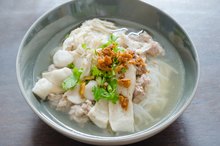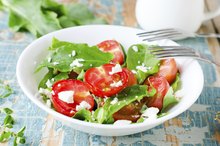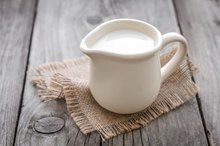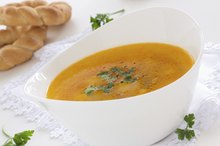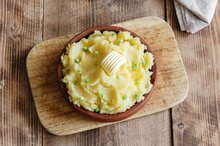What Is a Microbiotic Diet?
The microbiotic diet follows the principle that all food contains energy, but this energy goes far deeper than calories. When preparing a meal, you want to create a balance in the positive and negative forces found in food. This balance helps provide an internal balance in the body, which, proponents say, generates better health.
Features
The calories in microbiotic diets are broken up across specific food groups. Approximately 50 to 60 percent of calories are derived from whole grains, such as barley, millet, buckwheat, rye or brown rice, 25 to 30 percent are from vegetables, except tomatoes, potatoes, peppers, eggplants, beets, zucchini, spinach, avocados or asparagus, and 5 to 10 percent consist of cooked legumes or foods made from legumes, like soy, tofu or miso. Any remaining calories can come from certain fruits, nuts, seeds, seaweed and white fish.
Effects
What Can You Eat on the RAVE Diet?
Learn More
By limiting your diet to only these food groups, you avoid items considered heavily yin or heavily yang. All foods fall somewhere along a spectrum of complementary energies. Some are more yin, like milk, sugar, alcohol, soft cheese and tropical fruits, while others are more yang, like red meat, poultry, eggs and hard cheese. Eating something more yin than yang generates an internal imbalance that is said to affect health and vitality. The same is true for foods more yang than yin.
Preparation
Restricting food consumption isn't the only facet to a microbiotic diet. It also specifies the ways in which foods are prepared. When not eaten raw, food is steamed, boiled or baked, explains Native Remedies. Steaming, boiling or baking, however, shouldn't be done with electricity. Food must be prepared naturally, so using gas or flame is preferred. You should also only use utensils or crockery made out of wood, glass, ceramic, enamel or stainless steel. These methods and tools of preparation won't disrupt the complementary energies of the food prior to eating.
Benefits
How Many Calories in Vietnamese Food?
Learn More
The main benefit of a microbiotic diet is balance, notes the American Cancer Society. This balance is not only thought to improve your emotional and spiritual well-being, but also enhance your physical health by boosting the immune system. Proponents believe that this can help cure diseases, such as asthma, psoriasis and even cancer. While a microbiotic diet isn't used for the purposes of weight loss, it isn't uncommon to experience some weight reduction due to the dietary restrictions.
Recommendation
Before starting any diet, talk to your doctor. Medical professionals can assess your health and medical condition to determine if a specific diet is right for you. A microbiotic diet is fairly strict, limiting your intake of certain nutrients that are essential to your health.
Related Articles
References
Writer Bio
Based in Minneapolis, Minn., Dana Severson has been writing marketing materials for small-to-mid-sized businesses since 2005. Prior to this, Severson worked as a manager of business development for a marketing company, developing targeted marketing campaigns for Big G, Betty Crocker and Pillsbury, among others.

